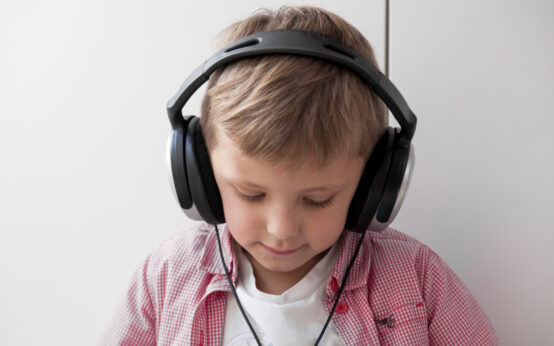Introduction
The effectiveness of Applied Behavior Analysis (ABA) in treating mild autism in children is widely recognized as a leading approach in autism therapy, often considered the benchmark. Nevertheless, its broad acceptance is not immune to controversy. Some critics contend that specific ABA techniques may be viewed as derogatory and, on occasion, even harsh towards the child. This debate gains particular significance for those designated as “high-functioning,” now more accurately termed as autistic individuals with lower support needs. Studies suggest that ABA could be advantageous for children displaying more evident traits of autism.
In contrast, developmental play therapy emerges as a recommended alternative for autistic children with lower support needs. This therapeutic approach prioritizes interactivity, communication, and emotional growth, setting it apart from ABA, which primarily concentrates on behavior modification. This article examines the efficacy of Applied Behavior Analysis in treating mild autism in children, addressing concerns regarding its application and considering alternative therapeutic approaches for this particular group.

Why ABA Matters
Behaviorism serves as a method for instilling desired behaviors by providing rewards for compliance or consequences for non-compliance, although the utilization of negative reinforcement has diminished in recent times. This approach commonly employed by parents and teachers, exemplified in statements such as, “Once you finish your peas, you can have dessert,” or “You can go out with your friends after cleaning your room.” Similarly, workplaces leverage behavioral techniques by offering incentives to encourage the achievement of specific goals.
Behavioral treatment, a manifestation of behaviorism, proves effective for numerous autistic children, particularly those with higher support needs. The primary objective of this treatment is to assist children in reaching developmental milestones that align with neurotypical peers.
ABA therapy, a form of behavioral treatment, tailors its plans to suit each child’s unique strengths and weaknesses. Theoretically, this implies that even autistic children with lower support needs could benefit from behavioral treatment. However, experts caution that while ABA can be beneficial for some children with autism, it may not be universally suitable, emphasizing the importance of individualized considerations in determining appropriate therapeutic interventions.

Controversies and Mental Health Concerns
ABA therapy is not universally suitable, with some autistic individuals expressing concerns about its impact on mental health and its tendency to portray them as problems to be fixed. Studies with autistic adults have revealed traumatic memories associated with ABA, suggesting significant negative long-term consequences and ethical considerations.
Autism Classrooms vs. General Education
The conventional offering of ABA in specialized “autism classrooms” may not align with the needs of autistic children with lower support requirements who are intellectually and behaviorally capable of thriving in a general education setting. The suitability of ABA may vary, urging a reevaluation of the setting in which the therapy is provided.
Real-World Applicability
While one-on-one ABA settings can benefit children learning basic skills, it may not be the most effective approach for those with lower support needs capable of engaging with neurotypical peers in natural environments. A lack of adaptability to real-world settings by ABA therapists may signal a mismatch for certain individuals.
Time Commitment Challenges
The intensive nature of ABA therapy, often requiring up to 40 hours per week, poses challenges for children seeking to participate in extracurricular activities. For children capable of engaging in typical activities, the time commitment of ABA may limit their involvement in other pursuits, prompting a reconsideration of its appropriateness.
Customizing ABA for Lower Support Needs
Limited research in peer-reviewed articles makes it challenging to draw comparisons regarding the effectiveness of behavioral treatment for autistic children with varying support needs. Furthermore, there is a scarcity of studies evaluating the efficacy of different Applied Behavior Analysis (ABA) approaches tailored to distinct groups of children.
Despite these gaps, specific recommendations can be offered for customizing ABA to address the requirements of children with low support needs.

The primary objective of behavioral treatment is to facilitate children in reaching the developmental milestones of their neurotypical peers. This approach can be adapted to teach intricate behaviors and social skills, such as:
- Recognition of facial expressions and nonverbal cues from others.
- Cultivation of cooperative social behavior.
- Verbal expressions of empathy.
- Engaging in diverse conversations with peers rather than focusing on a limited range of interests.
It is noteworthy that behavioral therapy may manifest differently for autistic children with low and high support needs. In addition to individualized therapy sessions, other behaviorally sound techniques, including incidental teaching, video modeling, and fostering generalization in natural environments, may be more prominently emphasized.
The overarching aim of behavioral therapy is to empower children, enabling them to learn effectively in less structured settings, such as peer groups. Even in these unstructured environments, the principles of ABA play a pivotal role in a child’s success.
Key principles encompass defining measurable behaviors for modification, exploring the function of inappropriate behaviors, reinforcing positive behaviors, and regularly assessing progress.
Conclusion
The effectiveness of Applied Behavior Analysis (ABA) therapy frequently recommended for children diagnosed with autism. Nevertheless, its applicability to individuals with lower support needs, is supported by limited evidence. Notably, many adults on the autism spectrum express concerns about the perceived harm and ethical issues associated with the behaviorism techniques utilized in ABA.
Tailored to each child, ABA therapy aims to assist them in reaching developmental milestones comparable to their neurotypical peers. Children with high support needs often experience substantial benefits from ABA therapy. Conversely, those with lower support needs may not exhibit as pronounced results, as they may already be relatively close developmentally.
Several factors may render ABA therapy unsuitable for some children. Issues related to the settings and time commitment involved can be significant considerations. In-school ABA therapy commonly administered in dedicated “autism classrooms,” potentially limiting exposure to general education settings. Moreover, the substantial time commitment required for ABA therapy, involving several hours per week. It may pose challenges for children to engage in extracurricular activities they enjoy. It’s crucial to carefully assess these factors when determining the suitability of ABA therapy for your child.
Source
- Alpern, G. D., Bolling, D. Z., & Ruck, C. A. (2019). Applied Behavior Analysis and Autism: History, Concepts, and Practice. In Encyclopedia of Autism Spectrum Disorders (pp. 1-7). Springer, Cham.
- American Psychological Association. (2019). Applied Behavior Analysis. APA Dictionary of Psychology.
- Dawson, G., Rogers, S., Munson, J., Smith, M., Winter, J., Greenson, J., & Varley, J. (2010). Randomized, controlled trial of an intervention for toddlers with autism: the Early Start Denver Model. Pediatrics, 125(1), e17-e23.
- McEachin, J. J., Smith, T., & Lovaas, O. I. (1993). Long-term outcome for children with autism who received early intensive behavioral treatment. American Journal of Mental Retardation, 97(4), 359-372. PMID: 8420247
- Solomon, R., Necheles, J., Ferch, C., & Bruckman, D. (2007). Pilot study of a parent training program for young children with autism: The PLAY Project Home Consultation program. Autism, 11(3), 205-224.
- Wong, C., Odom, S. L., Hume, K. A., Cox, A. W., Fettig, A., Kucharczyk, S., … & Schultz, T. R. (2014). Evidence-based practices for children, youth, and young adults with autism spectrum disorder. Chapel Hill: The University of North Carolina, Frank Porter Graham Child Development Institute, Autism Evidence-Based Practice Review Group.
- World Health Organization. (2019). Autism Spectrum Disorders. Retrieved from https://www.who.int/news-room/fact-sheets/detail/autism-spectrum-disorders







